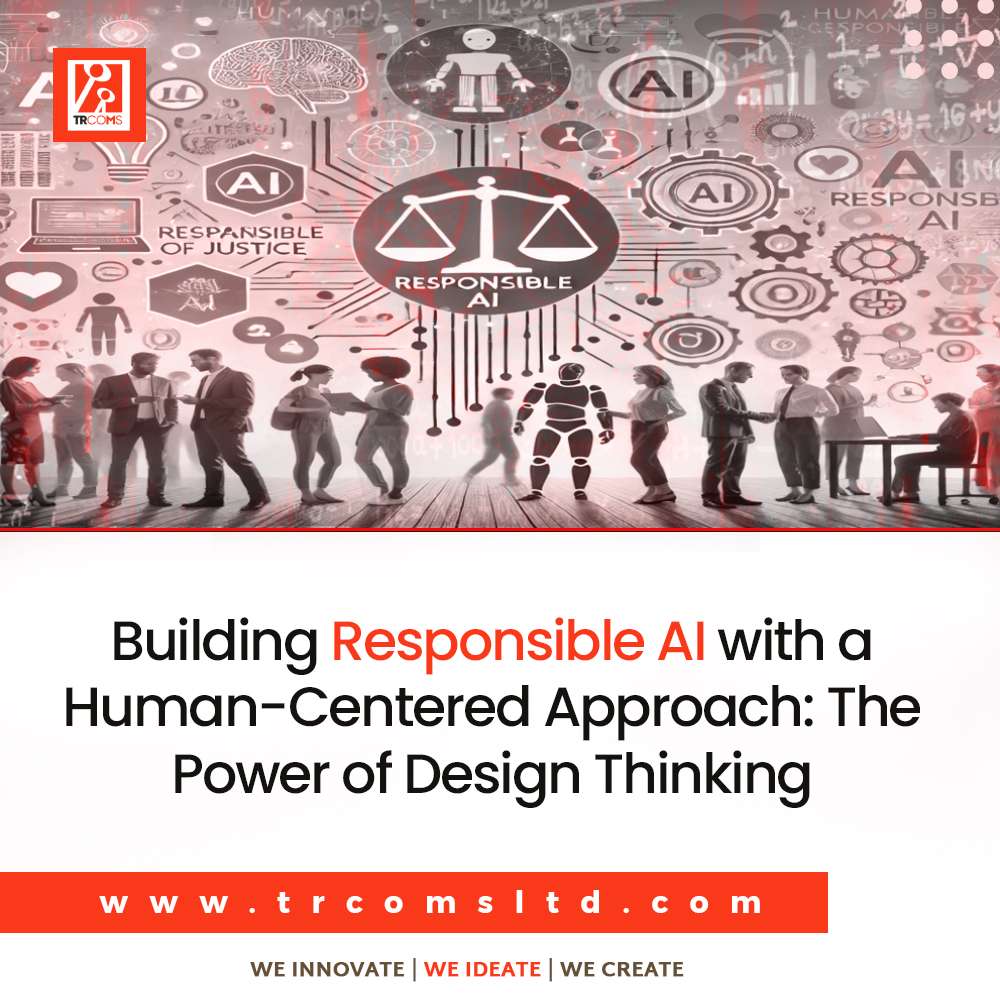Building Responsible AI with a Human-Centered Approach: The Power of Design Thinking
Building Responsible AI with a Human-Centered Approach: The Power of Design Thinking
Artificial Intelligence (AI) is reshaping the world, from healthcare and finance to how we interact online. But with all this potential comes a critical question: how can we ensure AI remains responsible? With concerns about privacy, bias, and fairness growing, the need for ethical AI has never been more important.
One powerful way to address this challenge is by applying Design Thinking, a human-centered approach that focuses on understanding people’s needs and solving problems thoughtfully and inclusively. By weaving these principles into AI development, we can create systems that not only perform well but also align with ethical values and human expectations.
What Does It Mean for AI to Be Responsible?
Responsible AI is about building systems that prioritize fairness, transparency, and accountability. These are AI models that minimize bias, respect user privacy, and are open about how decisions are made. However, achieving this doesn’t just happen by chance. It takes deliberate planning, ethical guidelines, and, most importantly, a focus on the humans who will be impacted by AI.
Why Design Thinking Matters for AI
Design Thinking is a creative and practical process that helps us solve complex problems by focusing on the people who will use or be affected by the product. It encourages developers to understand user needs deeply, brainstorm solutions, and build prototypes that can be tested and refined. This process is key to creating AI that is not only powerful but also safe, fair, and trustworthy.
Here’s how Design Thinking can be a guide for building responsible AI:
1. Empathize: Understand People’s Needs First
Responsible AI starts with understanding who will use it and how it will affect their lives. In the empathize phase of Design Thinking, developers engage with real users to get a clear picture of their needs, experiences, and concerns. This involves talking to diverse groups of people, especially those who might be negatively impacted by AI, such as marginalized communities.
By deeply understanding the people behind the data, developers can design AI systems that are more inclusive and less likely to reinforce biases. For example, a healthcare AI tool should be tested across different demographic groups to ensure it performs equitably.
2. Define: Identify the Ethical Issues Early On
Once developers have a clear understanding of user needs, the next step is to define the problem they’re solving. In responsible AI, this also means identifying ethical challenges—like potential bias, data privacy concerns, or a lack of transparency.
By recognizing these challenges early in the design process, developers can proactively address them. For instance, if an AI system is being developed for hiring, teams should define how they will ensure that it doesn’t unfairly favour certain candidates over others based on race, gender, or background.
3. Ideate: Brainstorm Ethical Solutions
Now comes the creative part—ideate. This is where teams brainstorm potential solutions that meet both the technical and ethical goals of the AI system. It’s not just about what the AI can do, but how it does it. Solutions need to be both effective and responsible.
Teams might come up with ideas like:
Using explainable AI, where the system clearly shows how it reached its decisions.
Building in user feedback systems so people can report issues or biases as they use the AI.
Creating data sets that represent a wide range of users to avoid biased outcomes.
The goal is to think beyond just functionality and ensure that AI enhances fairness, inclusivity, and trust.
4. Prototype: Build and Test with Ethics in Mind
In the prototype phase, developers create early versions of the AI system, keeping ethical concerns front and center. This allows them to see how the system works in practice, test for issues like bias, and gather user feedback on how the AI feels to interact with.
For example, an AI system designed to recommend content might be tested to ensure it doesn’t unintentionally push harmful or biased material. At this stage, real-world testing helps developers catch any unintended consequences before the AI is widely deployed.
5. Test: Constantly Improve Based on Feedback
Finally, the test phase is where the AI is put to use with real users. This step is critical because it gives developers a chance to see how the AI operates in diverse, real-world scenarios. Most importantly, it provides an opportunity to learn from user feedback and make adjustments.
Responsible AI isn’t a “set it and forget it” project. It requires continuous monitoring and improvement to adapt to new ethical challenges. For example, if an AI tool starts showing biased outcomes as more people use it, developers need to refine the system to address these issues immediately.
A Culture of Responsibility
While the Design Thinking process is a great roadmap, creating responsible AI is also about building a culture that prioritizes ethical practices throughout the AI’s lifecycle. Organizations must commit to integrating ethical guidelines at every stage—from initial design to long-term maintenance.
This includes practices like regular audits of AI systems to ensure they remain unbiased, being transparent about how AI makes decisions, and engaging with a diverse range of stakeholders. It’s about making responsibility a core part of the AI development process, not an afterthought.
Conclusion
AI is a powerful tool, but with power comes responsibility. By using a Design Thinking approach, we can create AI systems that are not only innovative and efficient but also aligned with human values and ethical standards. Empathy, creativity, and iteration are at the heart of this process, ensuring that AI serves everyone fairly and responsibly.
The goal of responsible AI is more than just avoiding harm—it’s about designing a future where technology and humanity coexist in harmony, and AI enhances life for all of us, not just a few. As we continue to push the boundaries of what AI can do, keeping people at the center of the design process is key to creating systems we can all trust and benefit from.










